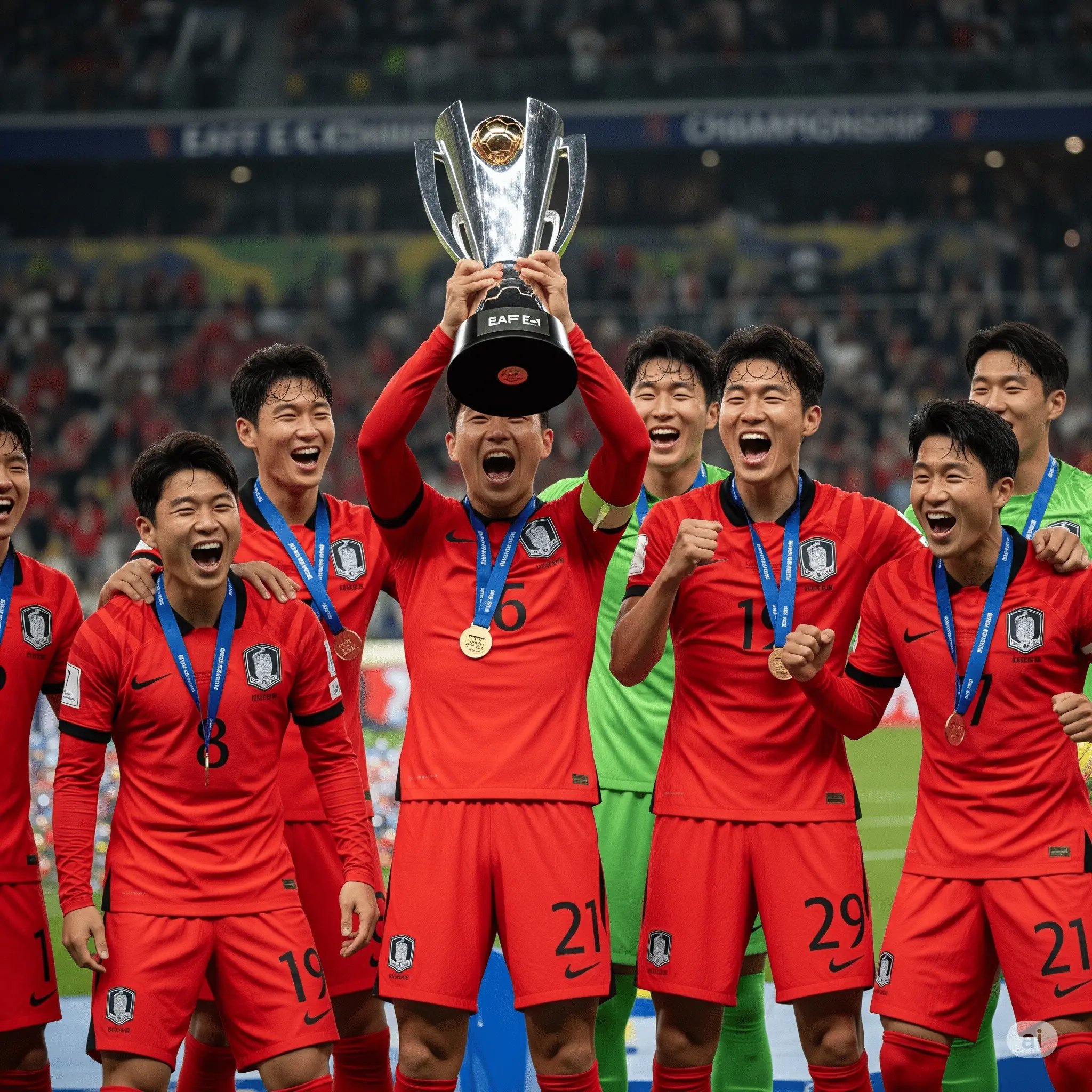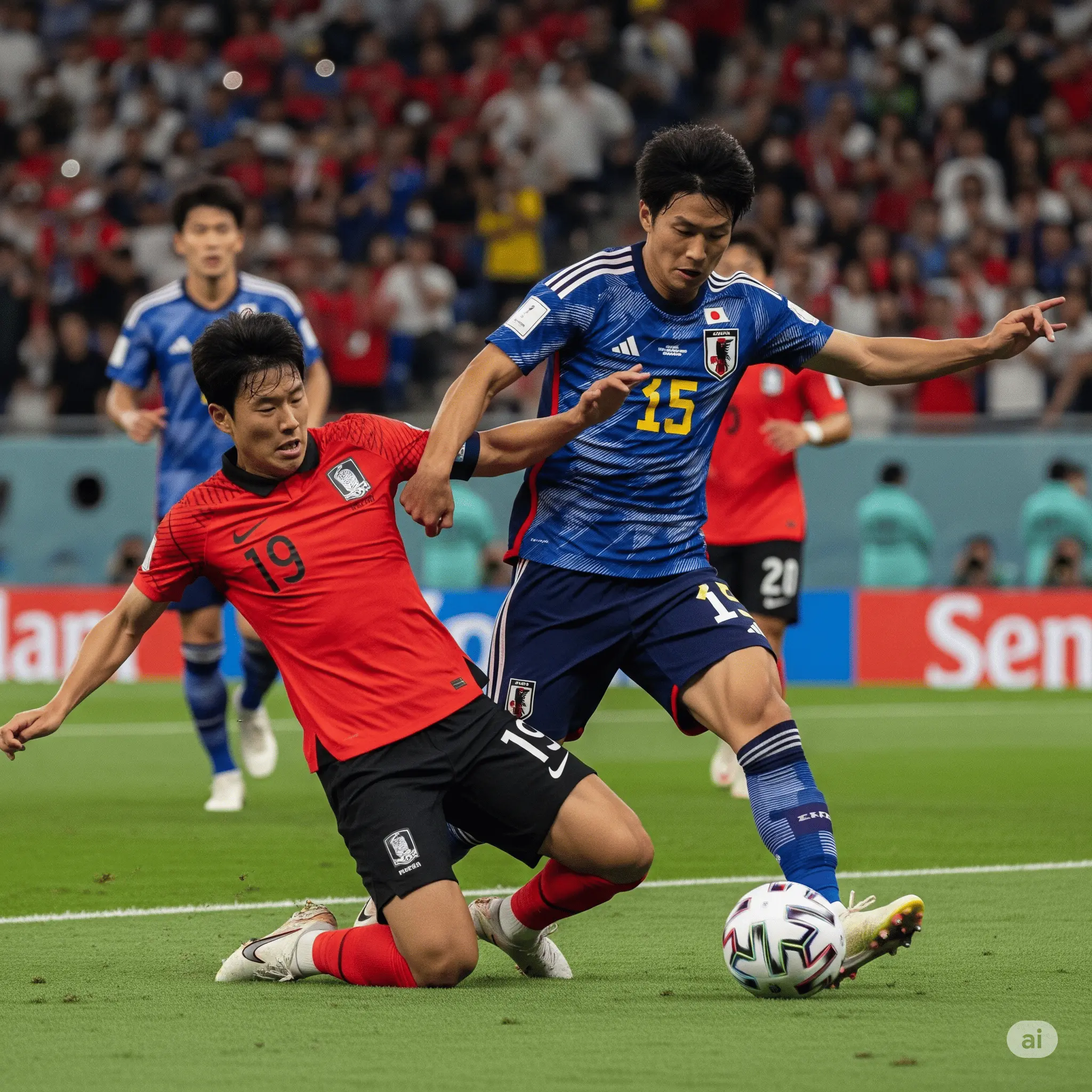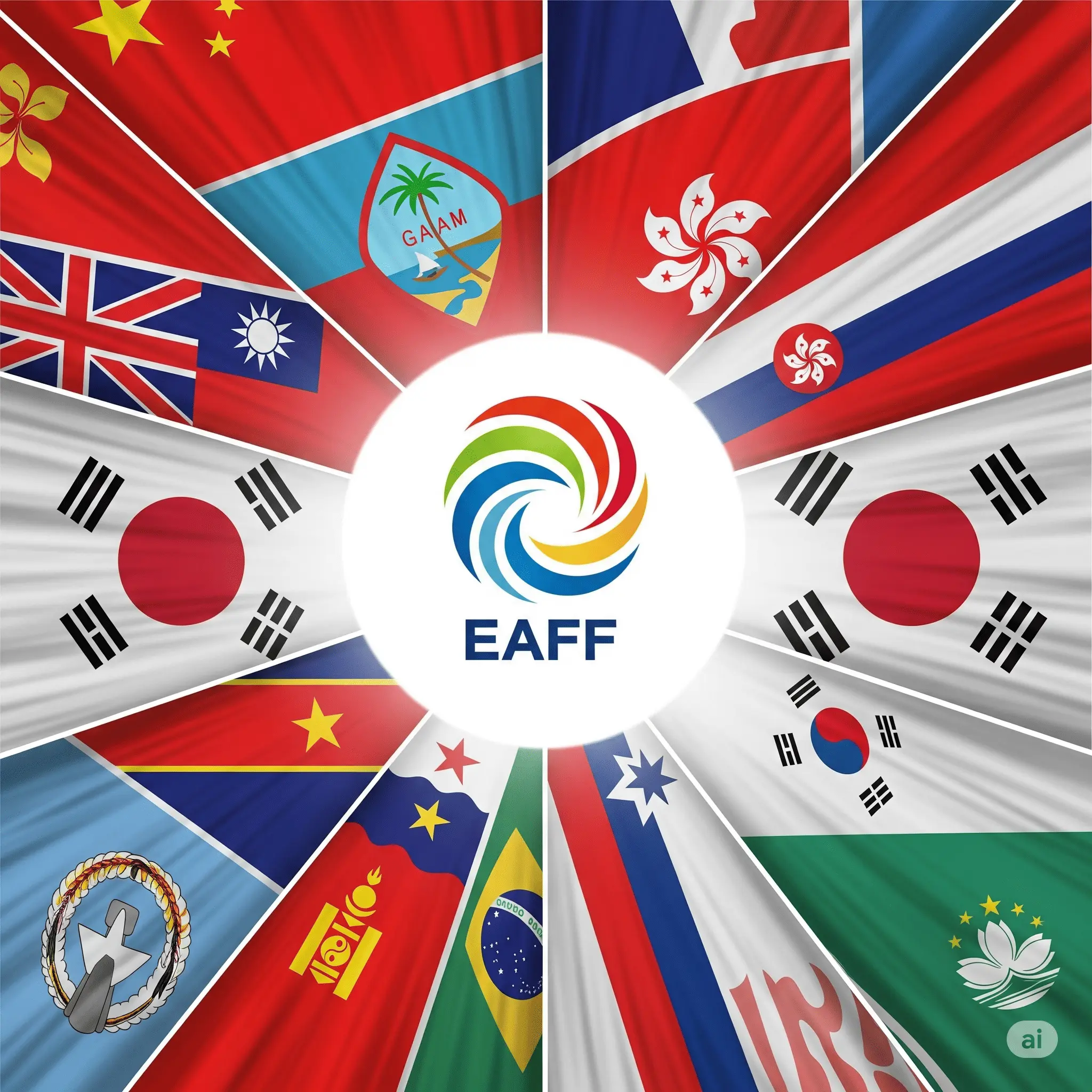If Europe has UEFA and South America has CONMEBOL, we have the EAFF! 💥 For avid football fans, the tournament hosted by the East Asian Football Federation (EAFF) is more familiarly known as the 'East Asian Cup.' However, the EAFF is much more than just an organization for a biennial tournament. It's a melting pot of football passion, where the historic rivalry of the Korea-Japan match, the rising ambition of Chinese football, and the dreams of other member nations intersect. In this article, we'll dive deep into everything you didn't know about the EAFF, from its origin story to the iconic moments of the E-1 Championship and the future of East Asian football.
The Birth of EAFF: East Asian Football Unites!
In May 2002, with the heat of the Korea-Japan World Cup still palpable, a significant new organization took its first steps in East Asian football: the **East Asian Football Federation (EAFF)**. At the time, West Asian (Middle Eastern) countries held considerable influence within the Asian Football Confederation (AFC). A consensus formed among East Asian nations that they needed to unite to have a stronger voice and promote regional football development.
With South Korea, Japan, and China at its core, the EAFF's history began with founding members Guam, Hong Kong, Macau, Mongolia, and Chinese Taipei. North Korea joined in 2005, and the Northern Mariana Islands joined as an associate member in 2008 (later promoted to full membership), forming the current 10-member structure. The EAFF's goals were clear: to foster exchange among member nations, to improve competitive standards by creating regional tournaments, and to strengthen East Asia's diplomatic influence within the AFC and FIFA. The dream was of a small but powerful federation.
"United we stand, divided we fall. For East Asian football to be competitive on the world stage, our own federation was an absolute necessity." – An EAFF Founding Official (Fictional Quote)
The EAFF Family: A Look at the 10 Member Associations
The EAFF comprises 10 member associations, spanning a wide spectrum from East Asian football powerhouses to nations still on a long road of development. Here is a brief overview of each country's football history and current status. Understanding their relationships is the first step to understanding the EAFF.
| Nation | FIFA Code | Joined | Characteristics |
|---|---|---|---|
 South Korea South Korea |
KOR | 2002 (Founder) | Tigers of Asia, powerhouse with 10 consecutive World Cup appearances. |
 Japan Japan |
JPN | 2002 (Founder) | Leader in technical football, built on the strong foundation of the J.League. |
 China PR China PR |
CHN | 2002 (Founder) | The sleeping giant with its ambitious "Football Dream." |
 North Korea North Korea |
PRK | 2005 | A team shrouded in mystery, with unpredictable strength. |
 Hong Kong Hong Kong |
HKG | 2002 (Founder) | Home to Asia's first professional league, utilizes naturalized players. |
 Chinese Taipei Chinese Taipei |
TPE | 2002 (Founder) | Strong in women's football, with the men's game still growing. |
 Guam Guam |
GUM | 2002 (Founder) | Influenced by the U.S., plays a physical style of football. |
 Macau Macau |
MAC | 2002 (Founder) | Strong in futsal, with 11-a-side football in a developmental stage. |
 Mongolia Mongolia |
MNG | 2002 (Founder) | Overcoming harsh climates with the fighting spirit of the "Blue Wolves." |
 N. Mariana Islands N. Mariana Islands |
NMI | 2008 | A full AFC member and the youngest in EAFF (non-FIFA member). |
A War of Pride: All About the EAFF E-1 Championship
The reason for the EAFF's existence and its most important event is undoubtedly the **EAFF E-1 Championship**. Commonly known as the 'East Asian Cup,' this biennial tournament has been whipping East Asian football fans into a frenzy since its inaugural event in 2003. While it sometimes faces criticism as a "B-team tournament" because European-based players are often not required to be released, this very aspect makes it a prime opportunity for players from the K League, J.League, and Chinese Super League to prove their skills and earn a spot on the national team.

The tournament format is relatively simple. The top-ranked teams (usually South Korea, Japan, and China) get a direct entry into the final round, while the remaining teams compete in preliminary rounds for a spot. The final four teams then compete in a round-robin format to determine the champion. The fact that it's often held outside of official FIFA international match windows, causing player selection difficulties, is also what makes the tournament more interesting. It becomes a stage for testing 'Plan B' strategies and discovering new stars. Numerous players have proven their worth through this tournament.
Past Champions and Their Unfolding Stories
The history of the E-1 Championship is a history of fierce competition among South Korea, Japan, and China. Without a single team's overwhelming dominance, the three nations have constantly vied for football supremacy in East Asia. A look at the number of titles won clearly shows this fierce rivalry.
On paper, South Korea is the most successful nation with six titles, firmly holding its position as the powerhouse of East Asia. They have shown formidable strength, especially by winning the last three consecutive tournaments. However, the journey was not always smooth. In 2005 and 2010, China overcame its "Koreaphobia" to lift the trophy, and Japan experienced the joy of its first title at home in 2013. Each country's victory has its own story, making the tournament's history rich and compelling.
Key Takeaway
The EAFF E-1 Championship is more than just a regional tournament; it's a showcase of pride for players from the K League, J.League, and CSL, and a crucial testing ground for the future of each national team.
The Eternal Rivalry: Korea vs. Japan, More Than a Match
The highlight of the E-1 Championship is undoubtedly the **Korea-Japan match**. As the saying goes, you can't even lose at rock-paper-scissors to them; the football match between these two nations is considered a battle of history and pride, not just a sport. The clashes in this tournament have left numerous iconic moments and stories.

In the 2017 tournament held in Tokyo, the South Korean team, led by coach Shin Tae-yong, orchestrated the 'Great Victory in Tokyo' by defeating Japan 4-1, with a knuckleball free-kick from Jung Woo-young and another goal by Yeom Ki-hun. Conversely, in the 2022 tournament, they suffered a humbling 0-3 defeat to Japan's young squad. Because of these unpredictable results and dramatic showdowns, fans eagerly await the Korea-Japan match in the E-1 Championship.
The Present and Future of EAFF: Challenges and Opportunities
While the EAFF has contributed to the development of East Asian football, it also faces several challenges. The most significant issue is the **skill gap between member nations**. Apart from South Korea, Japan, and China, other member nations are still significantly less competitive, which can reduce the excitement and tension of the tournament. Furthermore, with the growing importance of AFC-hosted tournaments like the revamped AFC Champions League and changes to World Cup qualification formats, some argue that the prestige of the E-1 Championship has diminished.
However, crisis brings opportunity. The EAFF is working to reduce the gap between its members and foster long-term development by revitalizing youth competitions and strengthening coaching and refereeing education programs. Moreover, the growth of women's football is breathing new life into the EAFF. The Women's E-1 Championship, in particular, is enjoying popularity comparable to the men's tournament, showing great potential for growth. The most crucial task for the EAFF going forward will be to increase its financial independence through improved broadcasting rights deals and sponsorships, and to reinvest that income back into the development of football in its member nations.
Conclusion: Where is East Asian Football Headed?
For the past two decades, the East Asian Football Federation (EAFF) has served admirably as the focal point for regional football. Through the E-1 Championship, its premier event, it has provided joy to fans and spurred improvements in member nations' competitiveness through fierce rivalry. While there are certainly challenges to overcome, the classic rivalry of the Korea-Japan match and the potential of the massive Chinese market are powerful assets for the EAFF.
It remains to be seen whether the EAFF can bridge the gap between its members and further enhance the value of its tournaments to establish a firm identity, much like the federations in Europe and South America. The continued interest and support from us, the football fans, will be the greatest driving force for East Asian football to advance onto the world stage. 🚀
